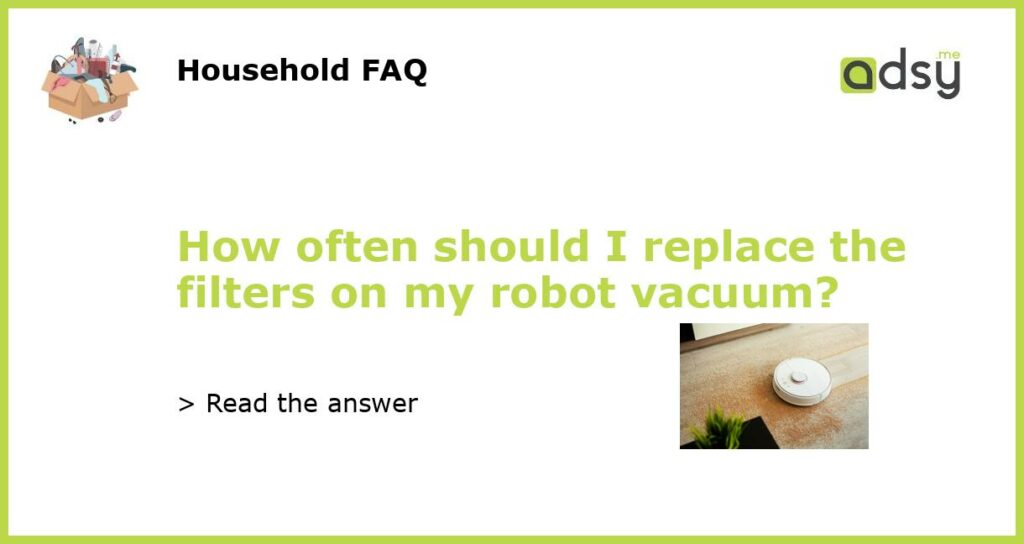How often should I replace the filters on my robot vacuum?
Robot vacuums have become increasingly popular in recent years, offering convenience and efficiency when it comes to keeping your floors clean. One important maintenance task for robot vacuum owners is replacing the filters. The frequency at which you should replace the filters on your robot vacuum depends on several factors, including the type of filter used and the amount of use your robot vacuum gets. Here’s a general guide to help you determine how often you should replace the filters on your robot vacuum.
Types of filters
Robot vacuums typically use two main types of filters: primary filters and high-efficiency particulate air (HEPA) filters. Primary filters, also known as pre-filters or foam filters, are designed to catch larger particles such as dust and hair. HEPA filters, on the other hand, are designed to capture smaller particles, including allergens and bacteria. The lifespan of each filter type may vary, so it’s important to understand the recommendations provided by the manufacturer of your robot vacuum.
Manufacturer recommendations
When it comes to filter replacement, it’s always best to consult the manufacturer’s recommendations. The manufacturer of your robot vacuum will typically provide guidance on how often filters should be replaced to ensure optimal performance. This information can usually be found in the user manual or on the manufacturer’s website. Following the manufacturer’s recommendations will help maintain the effectiveness of your robot vacuum and prolong its lifespan.
Frequency of use
The frequency at which you should replace the filters on your robot vacuum can also vary depending on how often you use it. If you have a heavily trafficked home with frequent use of the robot vacuum, the filters may need to be replaced more frequently. On the other hand, if you only use your robot vacuum occasionally or in smaller spaces, the filters may not need to be replaced as often. Pay attention to any decrease in suction power or the presence of dust and debris on your floors, as these can indicate that it’s time to replace the filters.
Indicators and maintenance reminders
Some robot vacuums come equipped with sensors or indicators that can let you know when it’s time to replace the filters. These features can be helpful in ensuring that your robot vacuum is consistently providing the best cleaning performance. Additionally, some robot vacuums may have maintenance reminder features that allow you to set reminders for when to clean or replace the filters. Taking advantage of these features can help you stay on top of filter replacement and ensure that your robot vacuum is always operating at its best.
Importance of regular filter replacement
Regular filter replacement is important for maintaining the effectiveness and efficiency of your robot vacuum. Over time, filters can become clogged with dust, dirt, and other debris, which can hinder suction power and reduce overall cleaning performance. Additionally, dirty filters can decrease the lifespan of your robot vacuum by putting extra strain on the motor. By regularly replacing the filters, you can ensure that your robot vacuum continues to perform optimally and prolong its lifespan.






